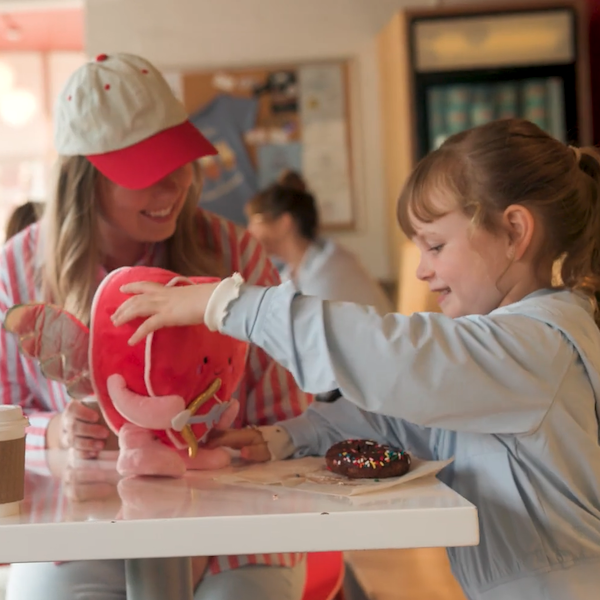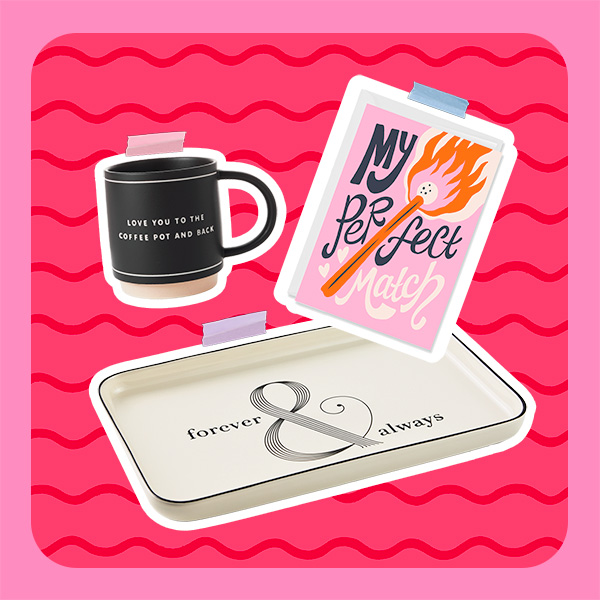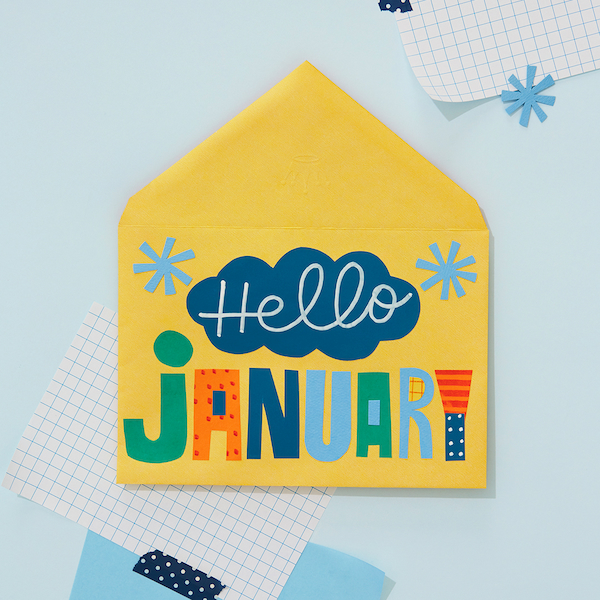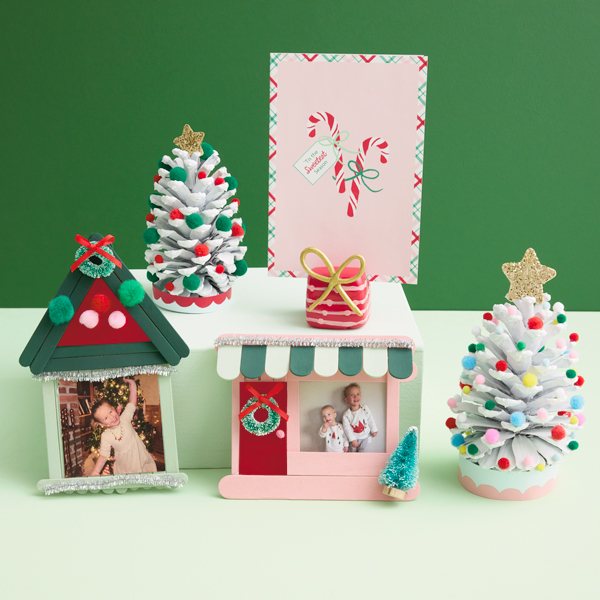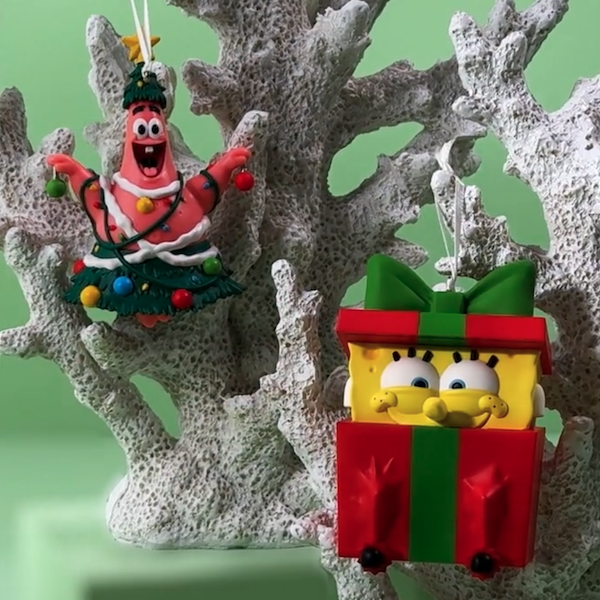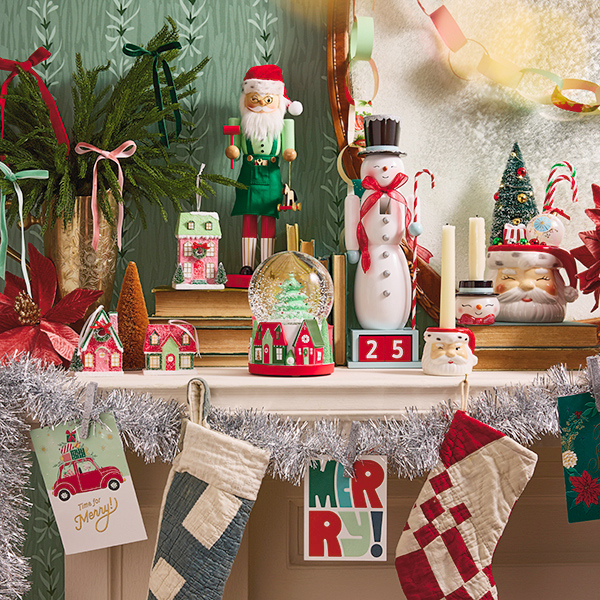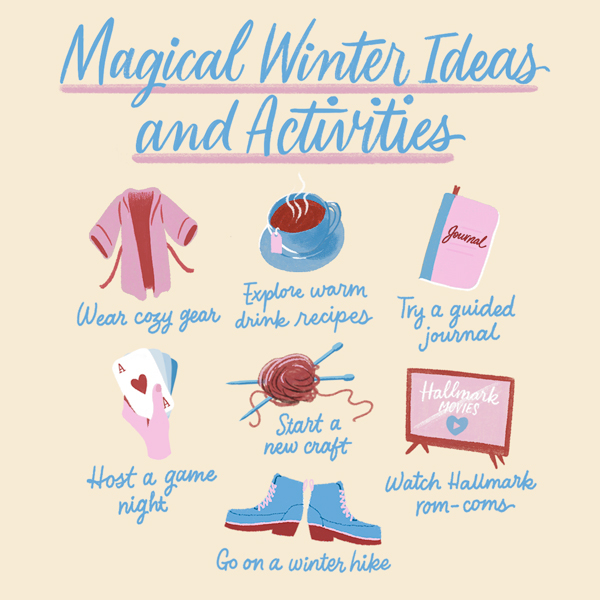Beyond texting: Teaching kids the art of letter writing
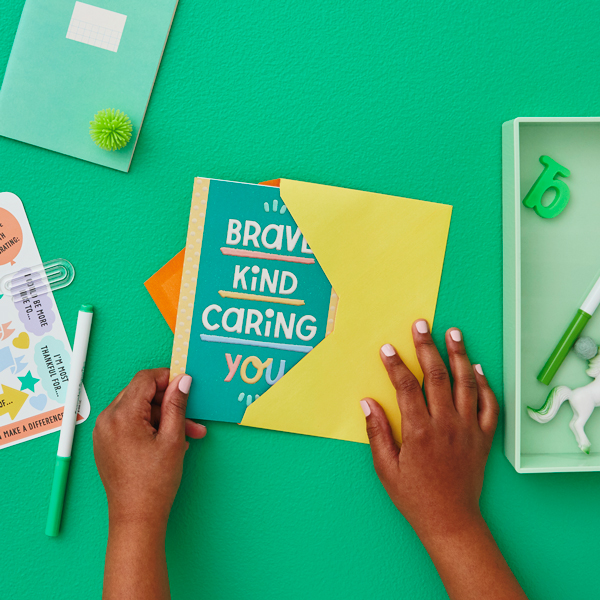
So often, it’s the littlest hearts and hands that have the biggest ideas, the hugest hopes, the greatest love. And there are so many small ways you can help them send love and kindness into the lives of others—like teaching kids to write letters and notes.
Inspired? Create and share by tagging @HallmarkStores.
Why teaching kids to write letters matters
I remember rushing to the mailbox after school to see if a pink envelope with Lisa Frank stickers had arrived from my pen pal. I’d love my girls to experience the joy of receiving and sending physical letters to read over and over again and reply to (and to find something other than bills in the mail).
Introducing children to the art of letter writing is a perfect way to help express themselves and spread happiness. But there’s more:
- It’s a great skill for their future endeavors and a fun way to learn handwriting, grammar, spelling and punctuation.
- It gives little ones who struggle with shyness or social skills a way to practice communication without being put on the spot and lets them have time to think through what they’d like to express.
- It’s also a screen-free way to keep in touch and to connect with faraway family—all with the loving touch of hand-drawn illustrations and handwritten signatures.
And it’s a great start to teaching kiddos they have the power to change the world…with a heartfelt message and a stamp!
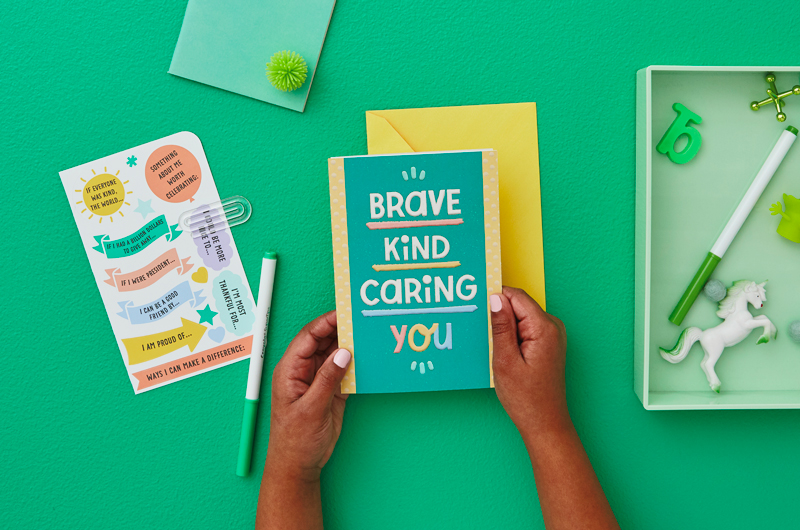
Letter writing 101: Basic format
In case it’s been years since you had your own pen pal, here are the basics for letter writing:
- Date
- Salutation. If they’re writing a letter to someone they haven’t met, talk to them about using titles, such as “Dear Madam Vice President,” or more open salutations, like “To Whom It May Concern.” But for pen pals they know and love, the greeting doesn’t have to be as formal as “Dear Grandma.” Let them choose what feels most like their voice: “Hi, Nana!” works, too.
- Body. The main part of a child’s letter, especially when they’re writing to a loved one, can be pretty simple—a sentence or a short paragraph.
Let kids lead the way on what they’d like to express or inquire about. It might be occasion driven, or you can give them suggestions, like: Write three things you’d like to share with the recipient and three things you’d like to ask the recipient. - Closing. Help them create a “wrap-up” to the letter, whether it’s a request for a response or an expression of love or “I miss you.” And then talk to them about the differences between an appropriate “Sincerely” or a heartfelt “Love” before their signature.
- Signature. Since cursive isn’t really taught in most schools these days, this is a great place for them to try a “fancy” way to sign their names.
- PS. Explain that this stands for “postscript” and is a quick, often fun add-on to the letter. Maybe a note about their pet? A “Can’t wait to see you this summer”? A mention of a fun memory they’ve had with the recipient?
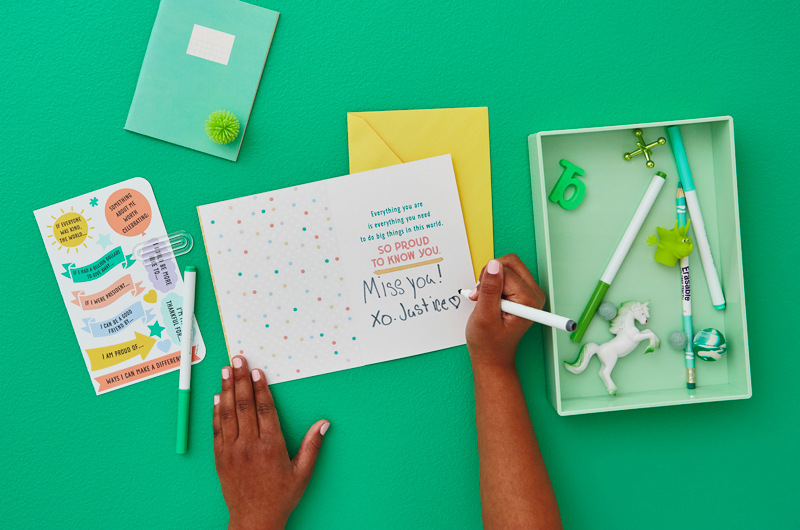
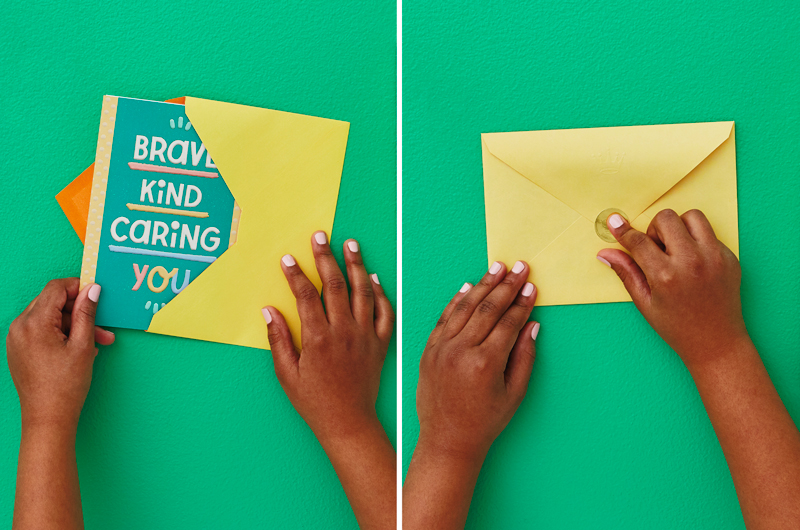
Letter writing tips for younger children
Letter writing is a wonderful way to express gratitude and writing thank-you notes is an easy place to begin, especially for younger kids. Start after a birthday or holiday and show little ones how to show gratitude for a gift received or time spent together.
A few more tips:
- If they can’t write just yet, ask them to tell you what they’d like to say in the letter—capturing it verbatim can be adorable. Let them decorate it with pictures and stickers. It’s also fun to let them “sign” (or cutely scribble) their name.
- If they can write a little, come up with a “fill-in-the-blank” letter where they can add a few words they know. Or help kids practice handwriting by printing what they’d like to say and letting them copy your writing onto their stationery.
- When they can properly write sentences, simply help them with structure and coming up with just the right words and expressions.
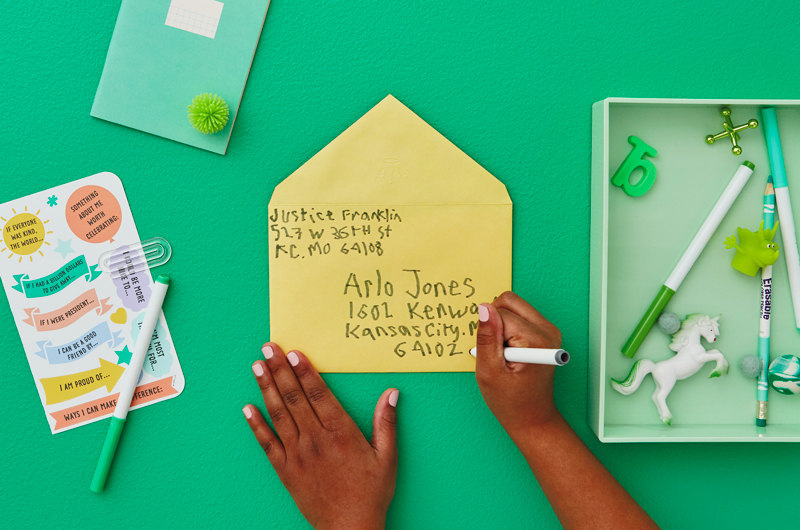
Changing the world—one piece of mail at a time
Letters aren’t just for sending to grandparents, aunts and uncles and cousins, and faraway friends. Kids can express big thoughts to companies, people they admire, elected officials and groups.
They can make suggestions, offer criticisms, convey admiration or support, ask questions and share their gratitude. Letter writing is a great way to show kiddos how to use their voices for change and to constructively express their ideas, thoughts and feelings—the world is listening!
A few recipients to start with:
- The president or elected officials
- A company that makes a product they love—and one that made a product that disappointed them
- Someone who does a job in a field that interests them
- Someone they admire—famous or otherwise
- A nonprofit group they support
- Children’s book authors (my kids have received some really fun replies!)
Once they’ve decided who to write to, you can teach them how to find addresses online. We’ve got instructions for addressing envelopes.
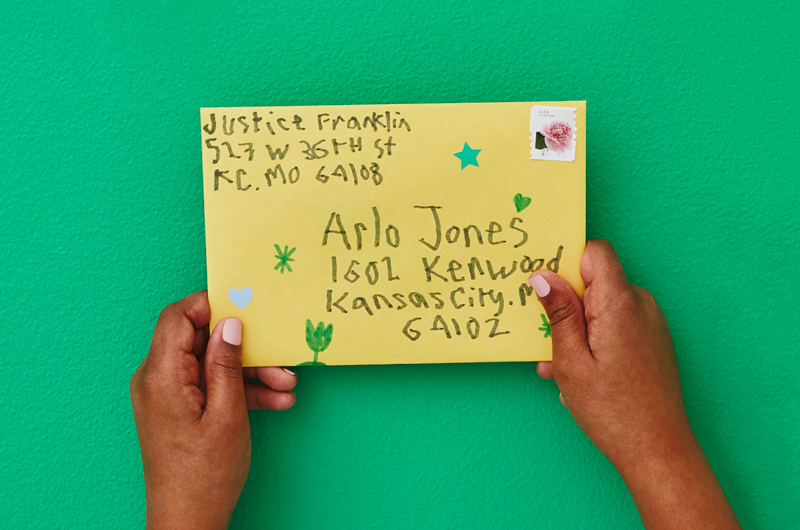
However your letters come out—sweet and scribbly, long and lovey, colorful and cutesy—it doesn’t matter. What matters is showing kids how to express themselves with the written word, how to share emotions and how to show you care with one little stamp.
Letter writing is so much more than putting pen to paper…putting love into motion.
Want more ideas to inspire and encourage kids to practice acts of kindness and more? Here you go!
Shop Kids Gifts
See allYou may also like
See more-
Valentine's Day Make little hearts happy this Valentine’s Day 💞
Nothing lights up a little one's face like letting them know just how much they're loved. Okay...except for when they...
-
Valentine's Day Valentine's Day gifts for him: 100+ ideas for the boyfriends, husbands, dads and sons in your life
Who’s ready for Valentine’s Day?! 🥰 We absolutely love this holiday and can’t think of a more perfect time to shower ...
-
Calendar Flip Spring Forward: March 2026 Holidays and Observances
Color us excited! From the wearin’ of the green and more sunny fun to colorful Holi festivals and celebrating crayons...
-
Calendar Flip Welcome a New Year: January 2026 Holidays and Observances
HAPPY NEW YEAR! If that hurt your head, you might have celebrated a little too much. When you’re feeling better, we h...
-
Calendar Flip Hello, Love: February 2026 Holidays and Observances
Let’s warm up this cold month with love and connections. From valentine cards to dressing up your pet, this month has...
-
Christmas Christmas gift wrap ideas to match your holiday personality
If you’re anything like me, the holiday season can make you tap into different sides of yourself. Maybe you become th...
-
Gifting 60+ Peanuts® Snoopy gifts to help fans channel their favorite beagle
It was a dark and stormy night in the winter of 2015. I was 17 years old, overwhelmed with AP classes, senior-year st...
-
Christmas 3 Christmas kids craft ideas, plus activities for even more easy holiday fun
From decorating the house to baking cookies, the Christmas season gives us so many opportunities to get creative and ...
-
Christmas The best Christmas gift idea: Bikini Bottom BFFs
Got a bestie who's as silly as you? Or one who's there through all of life's storms with a smile? Then we think this ...
-
Christmas Which Disney Pixar character is your favorite? 🤔
Thankfully, with so many beloved Disney Pixar character Keepsake Ornaments, you won't have to choose a favorite this ...
-
Christmas Not having Cher on your tree? As if! 💅
If you're a Millennial, we predict you will be majorly, totally, butt crazy in love with this Clueless Keepsake Ornam...
-
Christmas 20 vintage Christmas ideas to turn up the charm this holiday season
When I think of my perfect Christmas, vintage vibes are always what come to mind first. Santa’s sleigh in a dreamy wi...
-
Christmas 20+ ideas to help you plan your trip to the Hallmark Christmas Experience
Ever wanted to step inside of a picture-perfect Hallmark Christmas movie? Or travel to a place where you could immers...
-
Christmas Sit fireside with the cutest snowfolks around!
A campfire might seem like the least likely place to find a few snowmen hanging out, but if it's cold enough, even th...
-
Christmas With so much magic, we can’t choose a favorite!
Every Keepsake Ornament is magical, but our ornaments with light, sound and music are in a class all their own. From ...
-
Christmas Stocking stuffer ideas for literally everyone on your list
The stocking stuffer struggle is real. By the time you’ve bought your main presents, you feel like you’re all out of ...
-
Christmas You love Keepsake Ornaments…we love rewarding you! 🥳
Collecting Keepsake Ornaments isn't just a hobby for you—it's a passion! And that kind of enthusiasm is something we ...
-
Christmas 60+ Christmas decorating ideas to deck your halls—and every other space!
If you’re searching for Christmas decorating ideas to make all your spaces extra jolly and put you in a merry mood, y...
-
Christmas Dance your way to Christmas morning 🦛🎄
Keep little ones giggling and grooving all holiday break-long with this musical dancing Christmas hippo plush! Does i...
-
Winter Lean into the Season: winter ideas to make the season bright and extra cozy
There are two types of people in this world: those who love winter and those who’d endure an eternity of wearing wet ...

